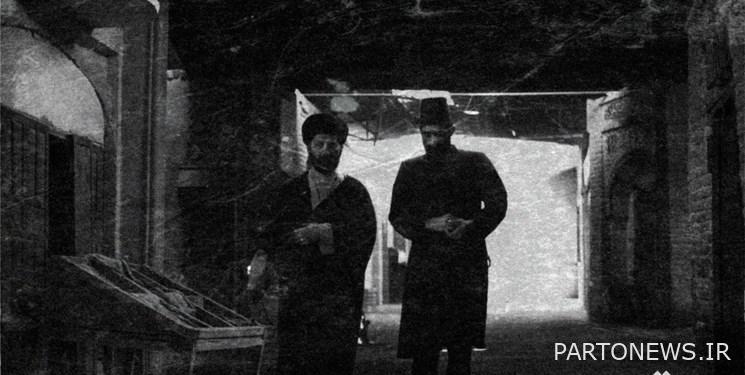with the truth cinema The difficulties of making a documentary for “Jamaluddin”, when there are not enough resources!

According to the news reporter of Fars News Agency, the documentary film “Jamaluddin”, produced by Soura Documentary Center, was selected for the second call for the production of short fiction and documentary films of “Epic Cinema” and entered the national competition section of the 17th edition of the “Truth Cinema” international festival.
Amir Ruini, a researcher, producer and one of the directors of the documentary “Jamaluddin”, in a conversation with a Fars news agency reporter, first answered the question why this documentary focused more on the relationship between Seyed Jamaluddin Asadabadi and the government than the people, and stated: Filmmaking shows a part of the story due to the time limit and even the story. We tried to make our documentary story-oriented; It means to narrate the life of Jamaluddin Asadabadi in the form of an attractive story so that the general audience can connect with it. The goal was not to produce only a content work, because a documentary film should not be treated on the screen in this way.
Regarding the show and discussion of the secret letters between the British spies of that period and the British government in Jamaluddin, he said: We defined the narrative in a different way. There were a series of documents related to British special agents, who were writing about Seyyed Jamaluddin Asadabadi. We decided to give a narrative to the story. The collection of letters was actually a result of the documents that we presented as a spy in the form of an identity.
One of the directors of the documentary “Jamal al-Din” said about the non-linear nature of the narrative: “In this work, after 13-14 minutes, we will discuss the biography of Seyyed Jamal al-Din because so far no documentary has been made that shows his character to the audience. A part of the documentary should have been the introduction of the main character of the story; Consequently, in order to maintain the charm of the story, we had to advance the character and tell the story. “The non-linearity of Jamaluddin’s narrative was a technical choice.”
Regarding the sources used in the documentary, the researcher of the documentary “Jamaluddin” said: “We had three main sources in Iran. Our main book was the biography of Hadi Khosrowshahi. Another part of our research sources was British secret documents. We also examined the lives of Sadr Wasghi and Lotfollah, Seyyed Jamal’s niece. Finally, the book “Hadi Khosrowshahi” which has narrated the story with a precise order and correct historical routine, was used more by us.

He added: “In order to research this documentary, we went to another book whose author was an Afghan person, but we found out that the author of the book is trying to make Seyyed Jamaluddin an Afghan person; As a result, it did not work for us. All the sources are derived from Seyyed Jamaluddin’s newspapers and articles, and there was no documentary book other than Hadi Khosrowshahi’s book.
The producer of the documentary “Jamal al-Din” said about the way he looked at Jamal al-Din Asadabadi and the change in his view towards him during the making of the documentary, “We had a general view and understanding of Seyed Jamal al-Din Asadabadi before making the documentary. The more we progressed in the documentary, the more information we got about the things and events that they accomplished. Finally, we preferred to carry out the research about Seyyed Jamaluddin Asadabadi based on the script and narrate a specific time frame. This was time-consuming and costly.”
Rouini added: “One of his personality traits was that despite being Iranian, he introduces himself everywhere with an identity. Sometimes he introduced himself as Afghan, sometimes he even changed his last name to Hosseini. Because he was not looking for position and position in the real sense and he wanted to unite the Islamic world. Asadabadi looked at Islam regardless of the country’s identity, counted everyone under the same flag and believed that we should all return to pure Islam.
He, who has been the researcher, director and producer of the documentary “Jamaluddin” at the same time, said about the challenges of this path: “I initially entered this project as a researcher and director. Then it was decided that a producer should join our group to facilitate the work; But with the reviews and the budget we had, I realized that adding a producer would hurt. Finally, I tried to produce the work myself.”
The producer of the documentary “Jamaluddin” continued: “Those who were in charge of the work budget told me to remove the reconstruction part of the documentary, but I thank God that I stood as a producer and completed the work.” I was definitely challenged financially as a producer, but I didn’t let this challenge affect my directing. On the other hand, co-directing the work with Ali Kosha in places where I had other project responsibilities helped to move the work forward.”
At the end of his speech, Rouini noted: “The research section was very interesting for me in order to follow Seyyed Jamaluddin’s character. I did not meet a living person who knew Jamaluddin and this made me follow the narration myself. In this way, of course, I consulted and helped many historians, but in the end I relied on the sources.
The movie documentary “Jamal al-Din” is a slice of the life and campaigning activities of Seyed Jamal al-Din Asadabadi, a political thinker who, by reviewing the events that happened in Iran that day, portrays his story to the audience up to the tobacco and tobacco movement.
end of message/
You can edit this article
Suggest this article for the first page

